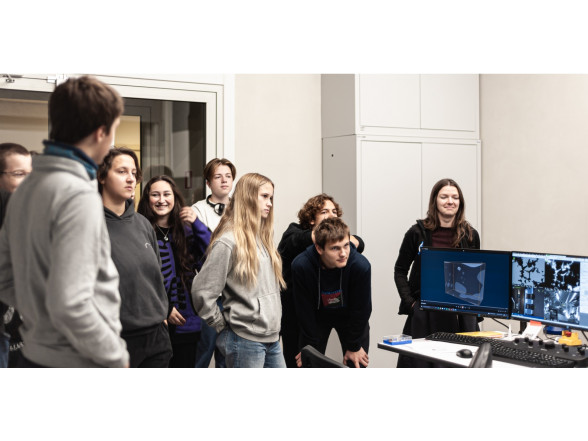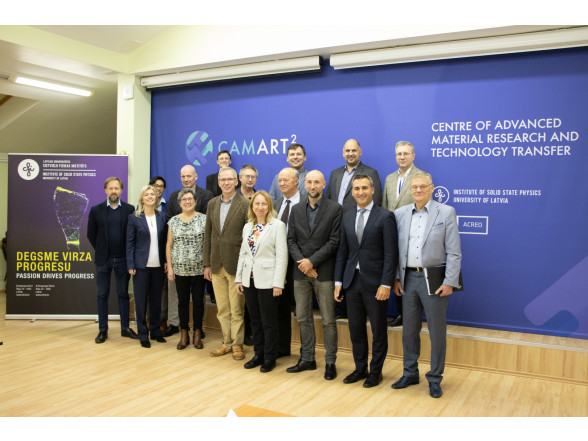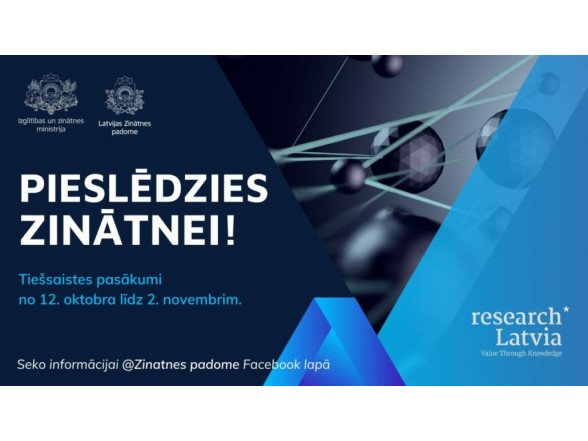On 18 October, the ISSP UL welcomed the 9th-grade students from the Riga Center School of Humanities. The students aimed to learn what the everyday life of the institute’s scientists looked like and see the laboratories where science is made.
The students were welcomed by Lāsma Gaile, a Specialist of Digital Marketing and Public Relations, who introduced the visitors to the institute’s most important facts and numbers, research directions, projects, and the impact of ISSP UL research in the Baltic region and beyond.
A researcher from the Laboratory of Materials for Energy Harvesting and Storage, Līga Grīnberga, told students about the research on hydrogen taking place in the institute since its foundation. She explained the importance of this energy carrier and its role in fulfilling the strive for green energy.
Researcher Līga Britāla from the same laboratory explained how the batteries work and how ISSP UL’s researchers contribute to studying materials to make the batteries more sustainable, not losing their performance.
At the Laboratory of Optical Materials, the students learned about the optical properties of the materials, saw some examples of luminescence, and the most feasible applications of optical materials were shown and explained.
The next stop was at the Laboratory of Computer Modeling of Electronic Structure of Solids, where young researcher Jurijs Grečenkovs demonstrated lattice structures of crystalline solids and explained how computer simulations on advanced materials, their surfaces, interfaces and nanostructures allow to obtain reliable atomic and electronic structure of complex advanced materials (nanomaterials) and get a multi-scale picture of physical-chemical processes in a large variety of materials with numerous technological applications.
In the last part of the excursion, students were introduced to the Nanotechnology Center of the ISSP UL. The Laboratory of Microscopy and Laboratory of Micro and Nano devices are situated here. Students learned about state-of-the-art microscopes and sophisticated analysis and microscopy-based prototyping tools, enabling scientists to explore material structures from macro to nano scales. Exciting was the explanation of microfluidics devices and their role in the future of precision medicine.
After an almost two-hour excursion, during which students gained an overall insight into the everyday life of researchers and learned about education and career opportunities at the institute, students were given souvenirs. Hopefully, for some of them, after this day, a career as a scientist will become something to aim for in the future.



